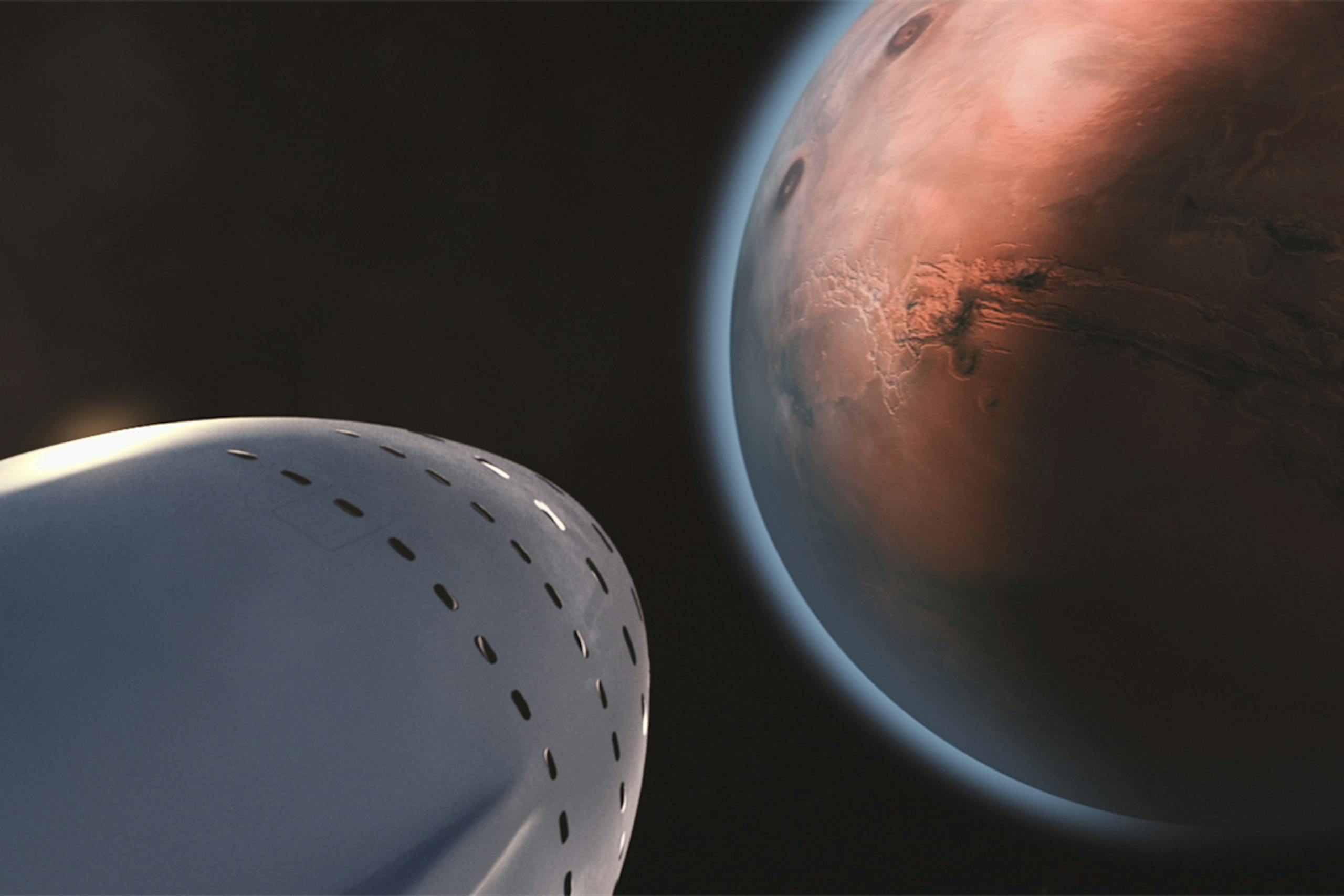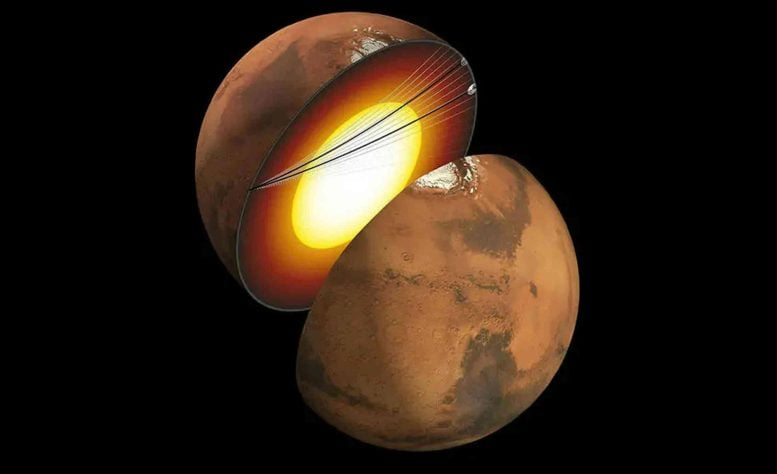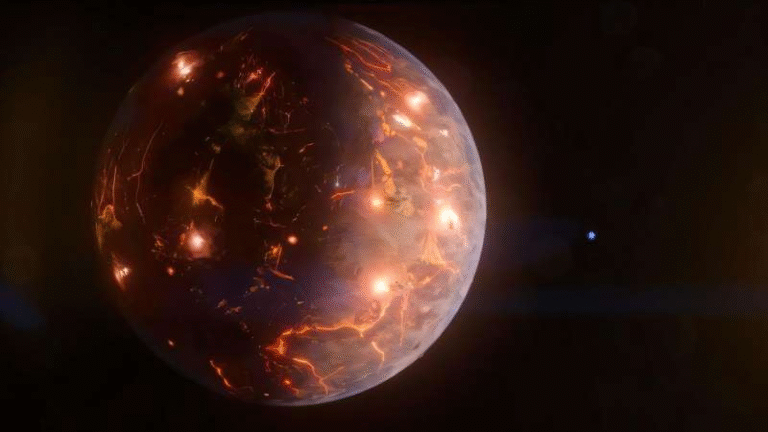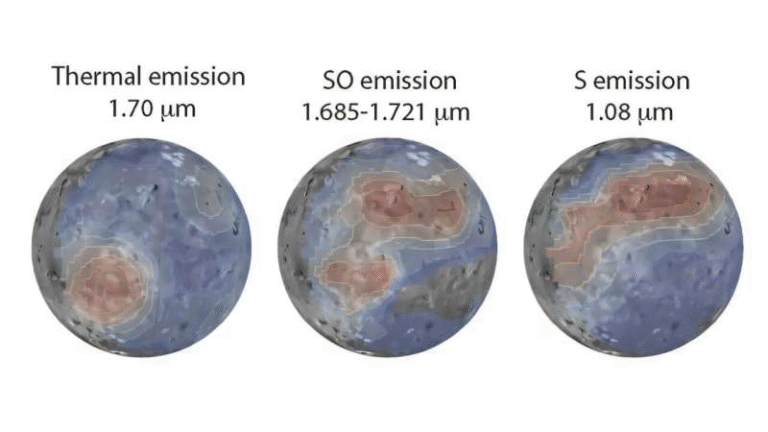Mars Has a Solid Inner Core: A Long-Standing Mystery Solved

For decades, scientists debated whether Mars had a structure similar to Earth’s interior or if its smaller size meant it never formed the same way.
Thanks to seismic data from NASA’s InSight lander, researchers have now confirmed that Mars does indeed have a solid inner core, wrapped by a liquid outer core. This finding, published in Nature in September 2025, changes how we understand Mars’ evolution, magnetic history, and habitability. Let’s dive into all the details.
What Exactly Was Discovered?
The new study, led by Huixing Bi and colleagues, shows that Mars’ inner core has a radius of about 613 kilometers (±67 km). This solid sphere sits at the very center of the planet, surrounded by a liquid outer core that extends outward to roughly 1,800 kilometers from Mars’ center.
Scientists identified two key seismic signals:
- PKKP waves, which travel through Mars’ liquid outer core.
- PKiKP waves, which bounce off the boundary between the liquid outer core and solid inner core.
On Earth, the same types of seismic waves have long been used to confirm the structure of our own inner core. Detecting them on Mars for the first time provides direct evidence of its layered planetary interior.
Why This Matters for Planetary Science
Earth’s solid inner core plays a critical role in generating the geodynamo—the process where convection in the liquid outer core produces the planet’s magnetic field. This magnetic shield protects our atmosphere from being stripped away by charged particles from the Sun.
On Mars, the discovery of a solid inner core suggests the planet might once have had a similar dynamo mechanism. If Mars had a magnetic field billions of years ago, it could have shielded a thicker atmosphere and allowed liquid water to flow on its surface. That’s consistent with the dried river valleys, lakebeds, and water-related minerals we see today.
Unfortunately, Mars lost its magnetic field long ago. Without protection, the atmosphere slowly leaked into space, leaving behind the thin, cold atmosphere we know today. This transition likely changed Mars from a potentially habitable planet to the barren desert world we see now.

Revisiting Earlier Studies
Back in 2021, a landmark paper by Simon Stähler and colleagues first analyzed seismic waves from InSight and concluded that Mars had a liquid core. Their model suggested a single liquid layer that was larger and less dense than expected. While they couldn’t confirm an inner core, they didn’t rule it out either—the seismic signals at the time weren’t strong enough.
Later, in 2023, Henri Samuel and colleagues refined the model with updated data, suggesting different possibilities for Mars’ core composition and size. But the question of a solid inner core remained unresolved—until now.
The new study builds on these earlier efforts by carefully selecting seismic events recorded at just the right distances and using advanced data analysis to separate weak signals from background noise. This careful approach uncovered the missing evidence for a solid inner sphere within Mars.
Core Composition and Light Elements
Like Earth, Mars’ core is mostly iron and nickel, but it also contains a surprising amount of lighter elements such as sulfur, oxygen, carbon, and possibly hydrogen. These light elements lower the density of the core and affect its melting temperature.
This is crucial, because the presence of lighter elements makes it harder for the core to solidify. The fact that Mars now has a solid inner core means that crystallization is happening as the planet continues to cool. The estimated 30% jump in compressional-wave velocity at the boundary between the liquid and solid layers is a clear indicator of this transition.
How the Data Was Collected
NASA’s InSight lander arrived on Mars in November 2018. It carried a highly sensitive seismometer that recorded more than 1,300 marsquakes until the mission ended in December 2022.
Most of these quakes were relatively small, but about 23 events turned out to be particularly important for this discovery. These quakes originated 1,200 to 2,360 kilometers from InSight’s location, creating seismic waves that traveled deep through Mars and reflected off its inner structures.
By analyzing these signals, scientists were able to piece together a more complete picture of Mars’ interior than ever before.
Why Mars Lost Its Magnetic Field
The discovery of a solid inner core adds weight to the idea that Mars once had a functioning geodynamo, but lost it as the planet cooled. Unlike Earth, Mars is smaller, which means it cooled more quickly.
At some point, convection in the liquid outer core likely slowed or stopped, shutting down the dynamo and the protective magnetic field along with it. Without this shield, Mars’ atmosphere became vulnerable to solar wind erosion.
Evidence of this comes from missions like NASA’s MAVEN spacecraft, which is studying how atmospheric gases still escape into space today. Over billions of years, this process transformed Mars from a warmer, wetter planet into the cold, dry desert we see now.
A Quick Comparison: Earth vs. Mars
| Feature | Earth | Mars |
|---|---|---|
| Radius | 6,371 km | 3,390 km |
| Inner Core Radius | ~1,220 km | ~613 km |
| Magnetic Field | Strong, global | None today |
| Atmosphere | Thick, life-supporting | Thin, CO₂ dominated |
| Water | Stable at surface | Only ice and traces |
Mars’ smaller size and faster cooling seem to be the main reasons it couldn’t maintain a long-term protective field like Earth’s.
Limitations and Uncertainties
While this discovery is a major step forward, there are still open questions:
- Data limitations: All seismic data came from a single lander at one location. Unlike Earth, where we have a global network of seismometers, Mars only had one. That makes interpretation harder.
- Model assumptions: The inner core’s size and composition are based on models of how seismic waves travel through different materials under Mars-like pressures. Small changes in assumptions could slightly shift the results.
- Boundary conditions: Scientists don’t yet know whether the transition between liquid and solid is sharp or if there’s a partially solidified, mushy zone.
Despite these uncertainties, the evidence for a solid inner core is strong and represents real progress.
What This Means for Future Research
Understanding Mars’ core is not just about one planet. It helps scientists figure out broader questions like:
- How do rocky planets form and evolve?
- Why do some planets keep magnetic fields while others lose them?
- What role does size play in a planet’s long-term habitability?
Future missions could place additional seismometers at different locations on Mars, providing more precise data. Combined with orbital observations and lab experiments, this would refine models of Mars’ interior even further.
Related Information: Mars’ Surface Clues
The discovery of a solid inner core ties neatly with what we see on the surface:
- Valley networks and riverbeds: These point to flowing water in Mars’ past.
- Mineral deposits: Certain minerals form only in the presence of water, supporting the idea of a wetter climate.
- Magnetized crust: Parts of Mars’ crust retain traces of ancient magnetism, confirming that a global field once existed.
All of these observations fit into the story told by the new seismic evidence. Mars was once much more Earth-like, but its smaller size sealed its fate.
Broader Importance
This study shows the power of planetary seismology. Before InSight, models of Mars’ interior were based mostly on indirect evidence. Now, scientists are directly probing the deep structure of another planet. That’s a huge leap forward.
It also highlights how planets evolve differently depending on their size, composition, and distance from the Sun. Earth got lucky—it’s big enough to keep its dynamo running, which in turn kept its atmosphere and made life possible. Mars wasn’t as fortunate.
Final Thoughts
The confirmation of a solid inner core inside Mars is a remarkable achievement. It not only solves a long-standing planetary mystery but also provides fresh insight into why Mars lost its magnetic field, atmosphere, and water. While uncertainties remain, this discovery makes it clear that Mars is structurally more similar to Earth than previously thought.
And importantly, it shows that even after a mission has ended, careful reanalysis of its data can keep delivering breakthroughs.
Reference: Seismic detection of a 600-km solid inner core in Mars, Nature (2025)





